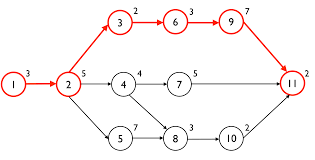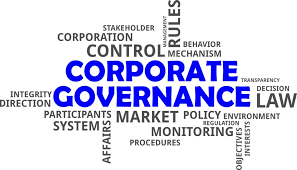IMPLICATIONS OF STRATEGIC PLANNING OF FINANCIAL INSTITUTIONS ON STRATEGIC PERFORMANCE AT FAMILY BANK (KENYA)
Abstract
Financial institutions presently implement strategic planning with the aim that this will lead to better performance. Previous research focused on the strategic planning and performance direct relationship and not the guidelines followed that make up the process of strategic planning. The manner and extent to which each of the steps is practised could have implications on the expected strategic planning results. The study’s purpose is to establish the effects of strategic implementation on a bank’s financial performance.
The effectiveness of strategic planning is measured by the extent to which it affects organisational performance and its survival rate. The study has a primary aim of looking into the relationship between planning and fulfilment in a financial organisation and determines the extent to which strategic planning affects performance in an enterprise, of which the Family Bank of Kenya, will be used as case study. Based on the above objective, relevant kinds of literature were thoroughly reviewed, and three research questions were formulated for this study.
The study is aimed at proving that Strategic planning enhances better financial institution performance, which at the end last has an effect on its survival and that strategic planning intensity is determined by managerial, environmental and organisational factors. This research is to help the management and administration of the Family Bank of Kenya as a guide to implementing an effective strategic planning for improved corporate performance.
The findings of this research work will also help the public who would want to know about some advantages and disadvantages of strategic planning and its effect on organisational performance. The research tools included; interview, reading the corporation’s journals, reading research books and e-books and also use of questionnaires.
CHAPTER ONE: BACKGROUND OF THE STUDY
Introduction
Although strategic planning began with military war decades ago, it has become a central element to many organisations today (Efendioglu and Karabulut, 2010). Strategic planning is the organisational process of defining its strategy and taking up decisions on the allocation of resources to implement policies (Thompson and Strickland, 2004). Robert and Duncan (2007) asserted that strategic planning offers directions to organization’s departments according to their identified strategies to achieve success.
There has been a rise in scholars’ opinions in the past concerning strategic planning and how it is effective in competition and firm performance. (Schmenner, 1995) asserted that financial institutions which are in the service industry are susceptible to the threat of entrants to the market and therefore need strategic thinking for designing and implementing projects that will make the firms stand out in the market.
Thompson and Strickland (2003), regard strategic management as a critical process that leads to formulated strategies being implemented to ensure the achievement of organisational objectives. Efendioglu and Karabulut (2010) said that suggestions were made concerning the use of formal plans to control market forces and competition for a firm’s effectiveness and performance. Educational institutions, business administrators and researchers have paid attention to strategic planning due to its effect on competition and organisations performance (Efendioglu and Karabulut, 2010).
Strategic planning has granted opportunities to the Family Bank of Kenya in the creation of projects that are aligned with plans and in the daily activities of the firm. The strategies therefore used by the Family Bank of Kenya acts as a guide in this study as the researcher aims to identify whether strategic planning has implications on the strategic performance of firms.
General objective: The researcher intends to find out the implications of strategic planning of financial institutions on strategic performance.
1.1 Background of the organization
The family Bank is also known as the family bank limited and is a financial institution started in 1984 by the name Family Finance Building Society Limited. Later in the year 2007, its name changed to Family Bank Limited. The bank has its headquarters in Nairobi and a total of 93 branches. The key leaders in the Family Bank are the Chairman of the BOD, the managing director and the chief executive officer. The Bank states its aim as meeting the needs of people ignored by other banks. The financial institution has concentrated on small income earners such as fishermen, farmers and the Jua kali sector.
The mission of the bank is to liberate people from poverty and financial bondage. Family Bank offers loans, savings, checking, and investment and debit cards as its products to its consumers. The bank also has a purpose to helping people obtain and sustain wealth through the financial services it offers.
Strategic importance is a necessary tool for the Family Bank of Kenya as it has a strategic thrust of becoming a premier lender. The key areas of strategic planning by the bank include infrastructure, the organisational structure, offering innovative products and services and quality customer service.
1.2 Statement of the problem
Though the importance of strategic planning on the performance of the Family Bank of Kenya is to satisfy the needs of its customers, nevertheless several obstacles are militating against the effective execution of such strategic planning. These issues include competition from other financial institution operators. There also is inadequate and ineffective information systems and overemphasis on short-term results to the neglect of long-term goals.
These problems mostly associated with the Family Bank of Kenya and therefore required solutions as revealed from the study done so as to encourage the performances of the Bank economically through the development and implementation of strategic planning.
1.3 Objectives of the Study
• To establish the extent to which leadership with strategic implementation has influenced organisational performance.
• To determine the degree to which corporate structures on strategic implementation has affected organisational performance.
• To establish the extent to which resource on strategic implementation has influenced organisational performance
1.4 Research Questions
1. How does leadership on strategic implementation influence organisational performance in Family Bank?
2. What is the extent to which corporate structures on strategic implementation has an impact on the organisational performance of Family Bank?
3. What is the extent to which resource on strategic implementation impact corporate performance?
1.5 Significance of the Study
The Family Bank of Kenya has maintained a first rating with the capacity to meet obligations as and when they fall due since 1984. The expectation is that the study will yield information that may be useful for future proper planning and decision making in the Family Bank of Kenya to improve competence and customer satisfaction. The findings and recommendations of the study may also be useful to the management and directors of other financial institutions.
This study will assist them not to rely on haphazard personal experience or subjective expert judgment or tradition or fashion in their management tasks but base their methods, decision and actions on concrete knowledge of issues of their strategy implementation supported by the findings. It is my hope that the study will form a basis for further research on how to enhance the competence of not only the Family Bank of Kenya but other organisations. Further research may lead to the generation of new ideas for better and more efficient management of banks and other organisations in Kenya and globally.
1.6 Scope of the Study
As an enterprise with a new status, the Family Bank of Kenya presents a tremendous responsibility to provide leadership in innovation, the products and services offered, creative thinking, value production and the implementation of globally accepted best practices through the adoption of strategic plans.
Hence, this study will focus on strategic plan employed by the Family Bank of Kenya and the criteria tools used in evaluating the performance of the Bank with particular reference to other organisations involved in the competition.
CHAPTER TWO: LITERATURE REVIEW.
2.1 The Concept of Strategy
Scholars have put forth different explanations of how they define strategy. The strategy is a crucial aspect of an organisation as it used as a tool to offer directions in the firm. Aremu (2010) defined strategy as a formula for organisational competition and a guide to what policies are to use for success. Mintzberg (1994) referred to strategic planning as a systematic criterion of implementation, formulation and control of strategies to meet organisations objectives.
Arasa and Obonyo (2012) states that most corporations are taking strategic planning as a tool used to show the level of a firm’s performance. Studies on strategic planning have been done in the past, but they did not consider steps in the strategic planning procedure. Ansoff (1970) explains strategic planning as a process of searching the relationship between making plans and performance in a firm.
Drucker (1954) implied that strategic planning involved managing programs in a process that is meant to make best strategic decisions. Strategic planning is an environment affected by consumers, changes in technology, competitor and social-political factors (Drucker 1954). Steiner (1979) refers to strategic planning as a formal systematic effort used in establishing enterprise policies, objectives and purposes.
Planning entails the creation of a detailed course of actions to enable implementation of strategies to achieve a firm’s goals and objectives. Wendy (1997) breaks strategic planning into three components that lead to achievements of the mission and visions of an organisation. The three elements are setting of the enterprise directions on its goals, defining the company’s strategic intentions and putting efforts in understanding the business environment.
2.2 Strategic planning and performance
Ansoff (1971) proved that strategic planning could result in excellent financial performance which is measured by various accounting measures such as the net income and internal rate of return. Porter (1987) outline cost strategies, differentiation strategies, focus and generic strategies that would enhance performance in businesses. Mintzberg 1994 argues that good outcomes do not originate only from planning but the effort put by the commitment from people.
Hopkins (1997) also claim that high performance can be discovered through planning but only with managers input or participation. Miller and Cardinal (1994) are said to put strategic planning to test and approved that it leads to positive performance. The strategic planning process is defined by many as entailing three major steps. (Armstrong 1982) Policy planning involves formulation, implementation and control.
Dimma (1985) claimed that performance is greater when managers place more emphasis to the stages of strategic planning. Hopkins (1997) stated that the financial performance of a firm cannot be directly linked to strategic planning. However, it arises from the different manager skills contained in the enterprise. The skills by managers show the kind of experience and expertise that they have in policy planning.
Managers are not so much into the process of strategic planning as they do not understand the significant impact it has on output. (Steiner 1979). Bird (1991) stated that the environmental change and intensity has led to the need for strategic planning in banks.
2.3 Theoretical framework
2.3.1 Thompson and Strickland Model
According to Thompson and Strickland Model (2003) implementation processes and activities or consumption sets up processes that can be used to gear an organization towards a set objective.
Table 2.1: Steps for implementing strategies
| Step | Special tasks |
| Creating an organization which can implement the strategies. | Creating a structure which supports implementation of strategies. Reinforcing skills and capabilities on which strategies are planned. Positioning most appropriate people for occupations in organizations. |
| Providing financial resources (budgeting) which can support strategies. | Being sure that financial resources are allocating to units in appropriate to their contribution of strategic role. Being sure that consuming resources (inputs) will cause desired outputs. |
| Establishing inter support units. | Developing and managing policies and procedures that facilitate implementation of strategies. Creating operational and administrational systems which can empower strategies. |
| Innovating motivation and remunerations in close relationship with objectives and strategies. | Motivating people and units for implementation of strategies. Designing remunerations can cause optimal level of performance. Encouraging tendencies for achievement of aims. |
| Forming organization’s culture to adjust strategies. | Creating common values. Defining ethical criteria Creating a workplace which supports strategies. Creating highly achievement motives in culture of organization. |
| Establishing inter support units. | Developing and managing policies and procedures that facilitate implementation of strategies. Creating operational and administrational systems which can empower strategies. |
| Performing leadership strategies. | Leading process of value formation, culture development and empowering implementation. Developing and saving innovations, responsibility to environment and using opportunities. Considering political aspects of strategies, confronting to power conflicts, and creating consensus. Posing ethical criteria and behaviour. Innovating modifications for improving implementation of strategies. |
Source: Thompson and Strickland (2003)
According to this model, there are several steps that an organisation should undertake to have a successful strategic plan implementation. Each step has a unique task taken. The factors in this model are relevant to this study because they show what an organisation should undertake to have successful implementation towards business performance. It has step by step plans with a particular task that companies can follow to influence their capabilities.
The following dimension of this model was selected and considered relevant to this study: Creating an organisation which can implement strategies. This dimension is appropriate this study while looking at organisation structures. It has particular tasks that should be undertaken to influence a company’s performance.
Providing inter-support unit is considered relevant to the study because it shows us that an enterprise can go about setting the appropriate policies, procedures and rules that can influence proper administration and operation functioning that can lead to good organisation performance. Performing leadership dimension is considered because it shows group leadership should go about in its endeavours to influence performance in a firm.
It shows how leadership leads to values formation, culture development, conflict resolution, and motivation in an organisation providing financial resources (budgeting). This dimension is considered because it shows financial allocation and budgeting is relevant to the contribution of strategic goals in the business.
2.4 Empirical review
Strategic planning researchers and academicians have contributed to the literature by examining the conditions under which specific practices, resources or structural arrangements contribute to sustainable competitive advantage. However, strategic management or strategy is a relatively young field facing all the problems and difficulties associated with a growing academic discipline.
Historically, the field of policy was viewed as ‘integrative’. Most scholars actively involved in the study of strategy hail from a host of disciplines – anthropology, sociology, population ecology, finance, marketing, political science, and theology to name only a limited number.
A study by Kaplan and Norton (2008), suggests that the management of operations and strategies involves five steps. The first phase is forming of the strategy with alignment to the company’s policies. The second step is translating the set strategies to objectives.
Thirdly, an operational process is created to facilitate the achievement of initiatives. The fourth step entails the implementation of the plans as well as monitoring performance. The last step is putting the strategy to the test by an analysis of profitability and cost in comparison to the outcome or performance.
A lot of scholars are now researching on the central role of firm processes in the improvement of financial performance. According to Spanyi (2004), the book by Kaplan and Norton on “Strategy Maps” puts business processes at the centre of their approach of measuring a firm’s progress in implementing the plan (Spanyi, 2004). They wanted to put emphasis on that in a procedure of changing to a processing company, and they thus kept a focus on thorough analysis in the implementation of processes which would, in turn, affect the organisational success.
2.5 Conceptual Framework
Strategic management practices are useful only when they make a positive difference in output from the traditional management practices. In this study performance is the dependent variable and independent variable include leadership, policies and procedures, structures and resource allocation
Figure 2.1: Conceptual Framework Showing Relationship between Strategic plan Implementation and Performance Source.
CHAPTER THREE: RESEARCH METHODOLOGY
3.1 Introduction
This section gives a detailed procedure of the methods to use in this study. It focused on a clear and concise description of the methods and manner through which this research work is to be conducted. Data has to be gathered for proper analysis of the effect of strategic planning on organisational performance using the Family Bank of Kenya as my case study. Therefore, an attempt is made in this chapter to show the results of this study by considering areas such as the design of the survey, research instruments, the population of the study, sample and sampling techniques, the method of data analysis and reliability of the instrument.
3.2 Research Design
According to Heron (1998), a research design refers to a method for managing and utilising information to get the desired precision. This study adopted a cross-sectional survey research approach. A cross-sectional approach is an approach where information on a population is gathered at a single point in time which is the case for this study. The study design uses the family bank of Kenya as the case study. The method chosen for the study is appropriate for obtaining in-depth knowledge of the policies utilised by the Family Bank for competitive advantage. Kothari (1990) agrees to the fact that a case study gives insight into issues that may be less known or not known by many.
3.3 Target Population
The target population for the study will be all departments within the headquarters of the Family Bank situated in Nairobi. The departments included in the survey will consist of the Operations/ Customer Service, Treasury, Risk Management, Inspection, Information Technology and the Human resource Department. Most importantly, financial managers and accountants who are involved in financial planning functions of the bank will be interviewed.
Five managers from the departments and 20 employees from the various departments that get affected by the financial planning of the bank will be interviewed. Before the interview, the researcher will seek permission from the respondents by explaining the nature and reason for undertaking the research so that none of the interviewers will be undue pressure to participate.
3.4 Sampling procedure
The sampling method used is stratified random sampling to select the respondents. This design allows the population to have an equal chance of being selected in the different strata. The strata, in this case, are the various categories within the company. The sample was chosen to ensure that the sampling size had a symbolic representation of the population.
The formula to find the sample size is:
n = N /1 + (N * e2)
Where;
N= population size
e= Tolerance, take 0.05 at 95% confidence level
n= sample size.
The distribution of the sample across the categories will be done using the formula:-
Number of individuals in the category x the sample size
The researcher intends to interview 5 managers from the company’s departments and 20 employees distributed across the departments.
3.5 Data Collection
The study uses both secondary and primary data. Secondary data is obtained from existing literature such the financial statements and records found at the Family Bank of Kenya. Primary data is gathered by the use of interviews. The study will however rely mainly on primary data collected using a questionnaire. The respondent consists of senior management, middle management and operational staff of Family Bank.
Structured questionnaires, where the study participants are asked to respond to same questions, will be used to aid the study (Mugenda and Mugenda, 2003). Five concept questionnaires will be used with multiple variables under each concept. The concepts will consist of Strategic Leadership, Organisation Structure, Resource Allocation and Performance. Books and journals from Family Bank will act as reference in this study.
The questionnaires will be semi-structured to allow attainment of diverse opinions and views regarding the research question. Interviewees will be given the ability to demonstrate their understanding of the topic by explaining their opinions such that questions may lead to other questions or dimensions for answering them. By getting diverse opinions, it’s possible to critically evaluate the research question and provide a detailed and conclusive analysis.
3.6 Validity of the Research Instrument
According to Mugenda and Mugenda (2003), reliability refers to the degree to which the research instrument can yield consistent results and data from repeated trials. Validity, on the other hand, is the extent to which results from the analysis of the data represent the phenomenon under study. To maximise the reliability of the instrument the researcher with the help of experts in measurements and evaluation will ensure that the questions in the questionnaire are not ambiguously presented to the respondents. In other words, to ascertain the reliability of the instrument, questionnaires have been used by several researchers who have come out with reliable solution to the problems
3.7 Data Analysis and Presentation of Findings
The study will apply descriptive statistics which describes and summarises data so that patterns are made visible. Inferential statistics are used to analyse the relationship between the factor and the service quality and multiple regressions to evaluate the contribution of all the factors to the dependent variable. Multiple regression methods use the correlations between a dependent variable and independent variables as a criterion to determine which variables would be included in the regression model.
3.8 Ethical issues
The researcher will upfront inform the respondents that taking part in the survey is voluntary and that they are also not forced to disclose information that they are unwilling to. The researcher expects to get resistance or difficulty with some of the respondents. Trust will be obtained from respondents by explaining to them the purpose of the research and the benefits it has on the firm. The interviewees will be given an opportunity to ask questions which will be answered by the interviewer.
3.9 Chapter summary
This section explores the research design and methods to be used by the researcher in the study. The researcher will use company records as secondary data together with semi-structured interviews and questionnaires, which of form part of the primary data, to collect data. The respondents will consist of the managers and employees distributed within the different departments of the bank.
For ethical purposes, the respondents will be asked to sign non-disclosure forms to ascertain that researcher will ensure confidentiality. Moreover, the researcher will follow the required guidelines as stipulated in the company’s policy to select respondents, like through the gatekeepers including the management, so that the research will be openly conducted. Respondents will deliberately decide to participate in the research.
References
Ansoff, H. I. (1970). Does Planning pay? Long Range Planning, 3(2), 2-7.
Ansoff, I and McDonnell, E. (1990). Implanting strategic management. 2nd Edition London; Prentice Hall.
Applying Strategic Planning. (n.d.). Strategic Planning for Public Relations. doi:10.3726/978-1-4539-1264-5/20
Heron, C. (1998). Introduction. The Workers’ Revolt in Canada, 1917-1925, 1-10. doi:10.3138/9781442682566-002
Efendioglu, A. M., & Karabulut, T. (2010). Impact of Strategic Planning on Financial Performance
Mason, S. (1975). Strategic planning for financial institutions. Long Range Planning, 8(5), 93. doi:10.1016/0024-6301(75)90106-5
Mugenda.A.G.and Mugenda.O.M. (2003). Research methods; Qualitative and quantitative Approaches. Nairobi: Kenya Acts Press.
Norton, D. P., & Kaplan, R. S. (2008). Balanced scorecard. The Palgrave Encyclopedia of Strategic Management. doi:10.1057/9781137294678.0037
Olujide, J., & Aremu, M. (2010). A comparative analysis of strategic marketing planning adoption in Nigerian banking and insurance industry. African Research Review, 3(5). doi:10.4314/afrrev.v3i5.51151
Performance of Companies in Turkey. International Journal of Business and Management, 5(4). doi:10.5539/ijbm.v5n4p3
Process of strategic planning. (n.d.). Process-based Strategic Planning, 45-64. doi:10.1007/978-3-540-68583-8_5
Strategic Planning and Performance Management. (2015). Value and Capital Management: A Handbook for the Finance and Risk Functions of Financial Institutions, 285-310. doi:10.1002/9781118774359.ch14
Ulin, R. P. (1954). The Practice of Management by Peter F. Drucker. Challenge, 3(3), 61-64. doi:10.1080/05775132.1954.11468040
Zakaria, N. (2014). Human Resource Strategic Planning Process: A Qualitative Study of Financial Institutions. doi: 10.4135/978144627305013519225
Want help to write your Essay or Assignments? Click here









